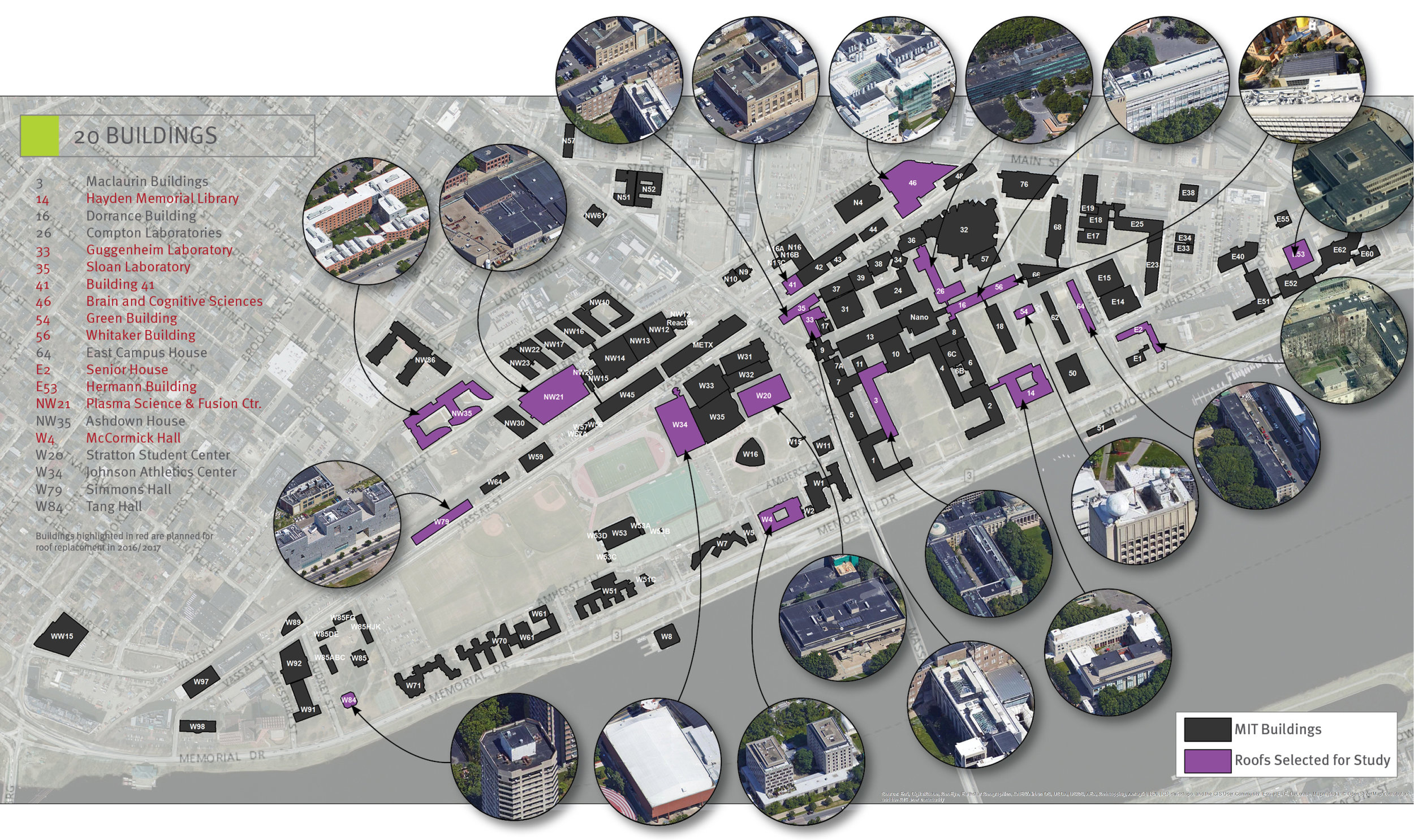MIT Sustainable Roof Study & Planning Tool
Goal: To help MIT’s campus achieve its Plan for Action on Climate Change goal of reducing carbon emissions by 32% by 2030
Over 42% of MIT’s campus has roof area, TOTALING 2.5 million SF
50% were identified as having the potential for vegetation
482,000 SF of roof area across 20 buildings were studied
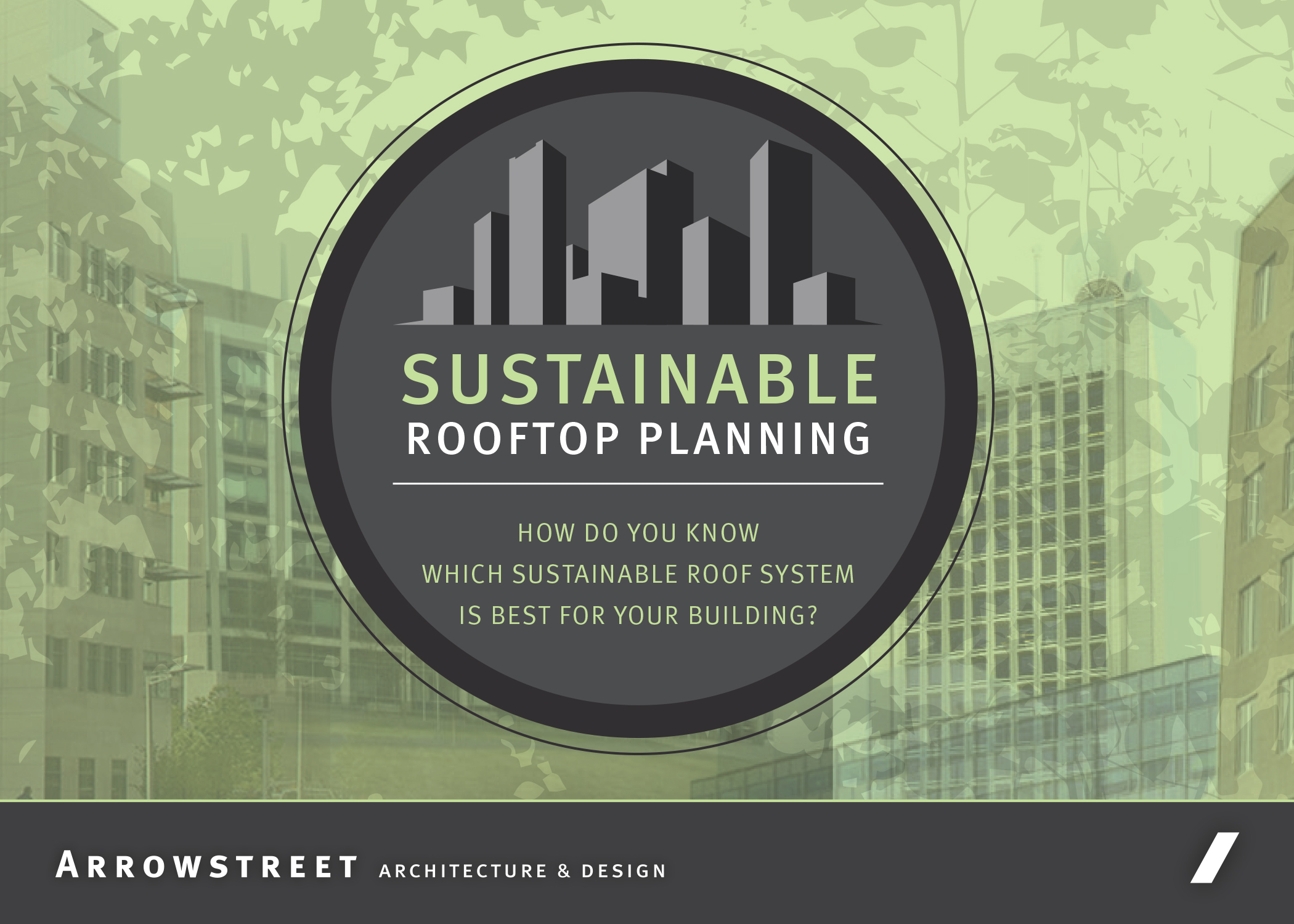
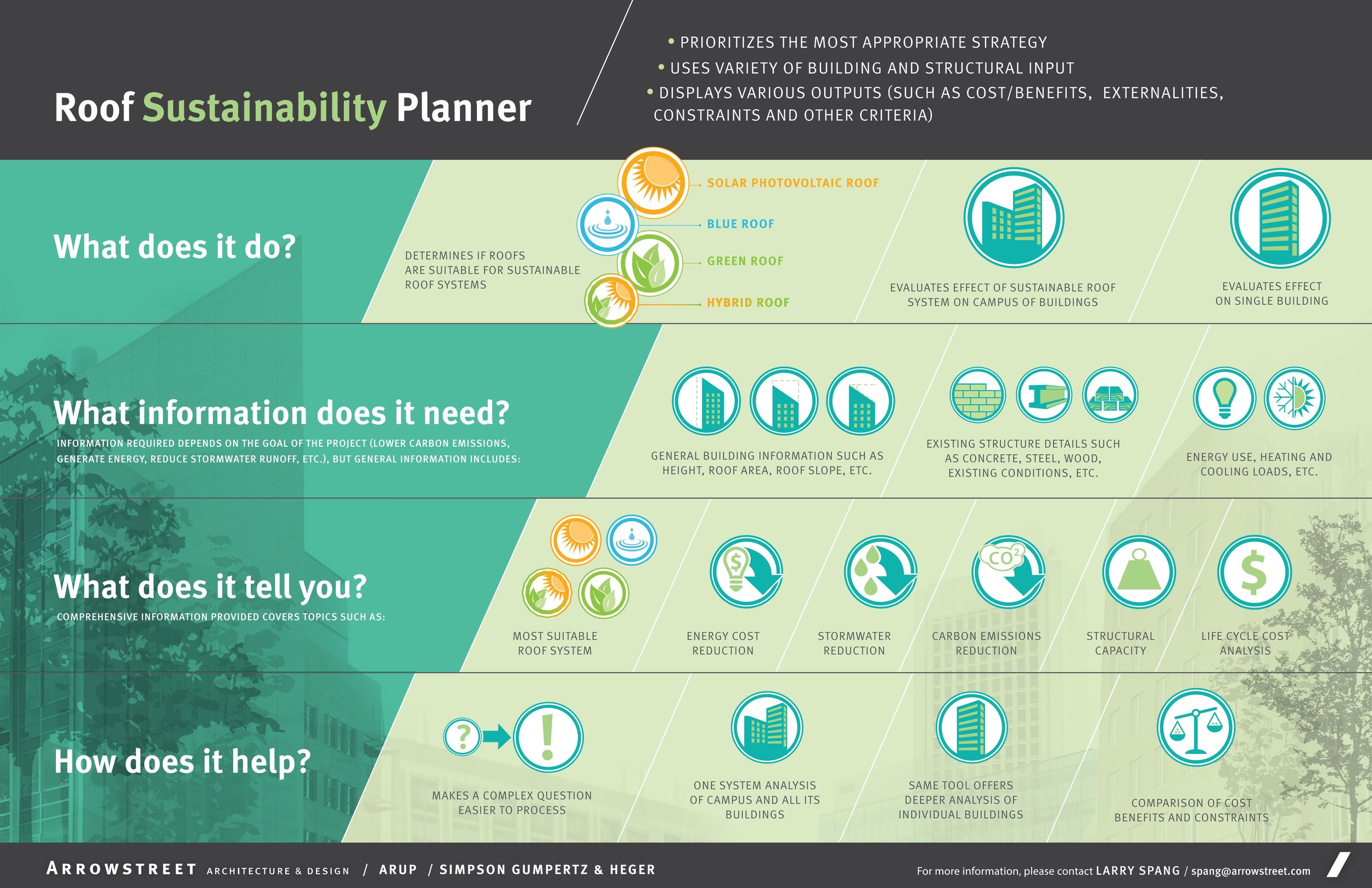
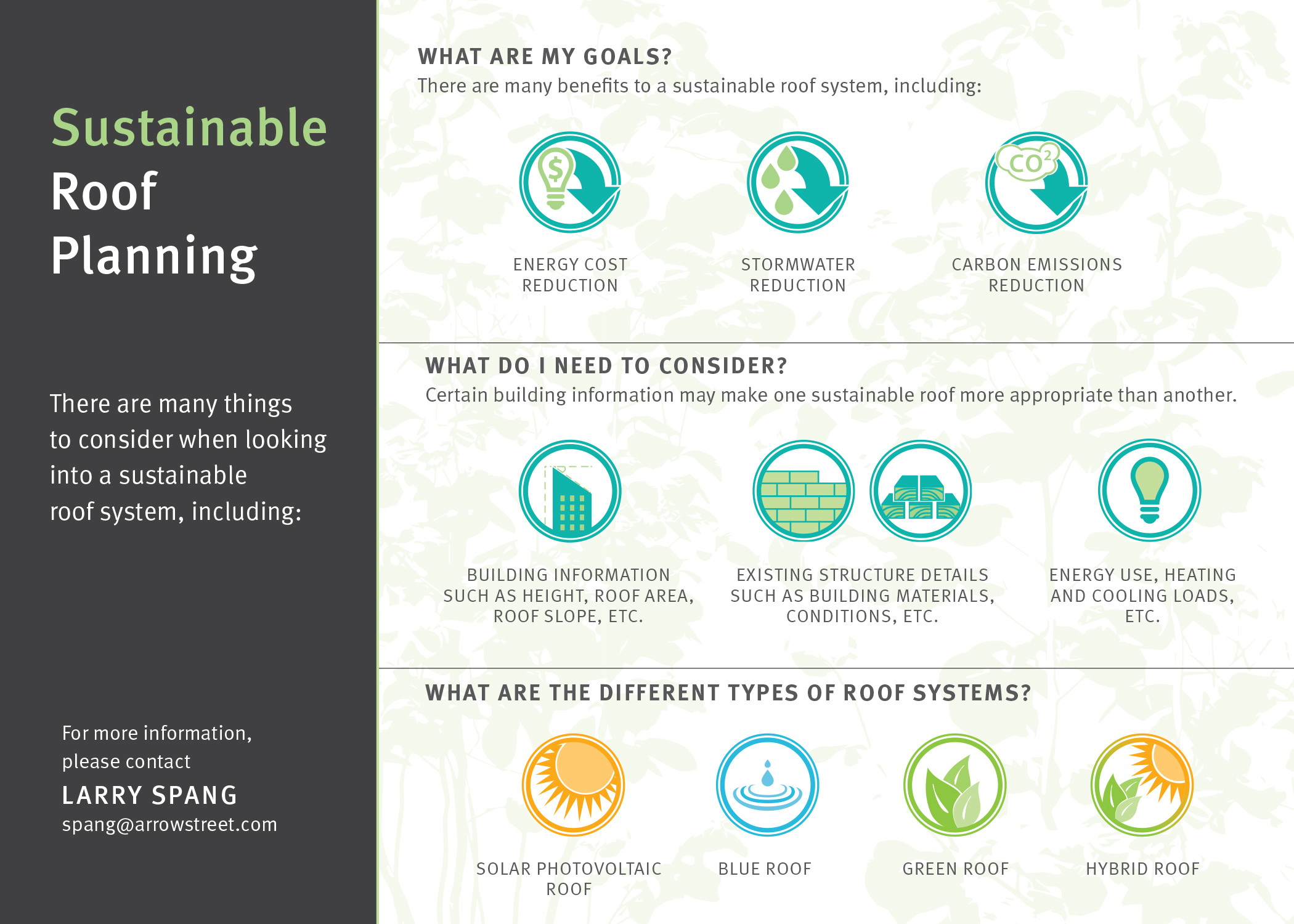
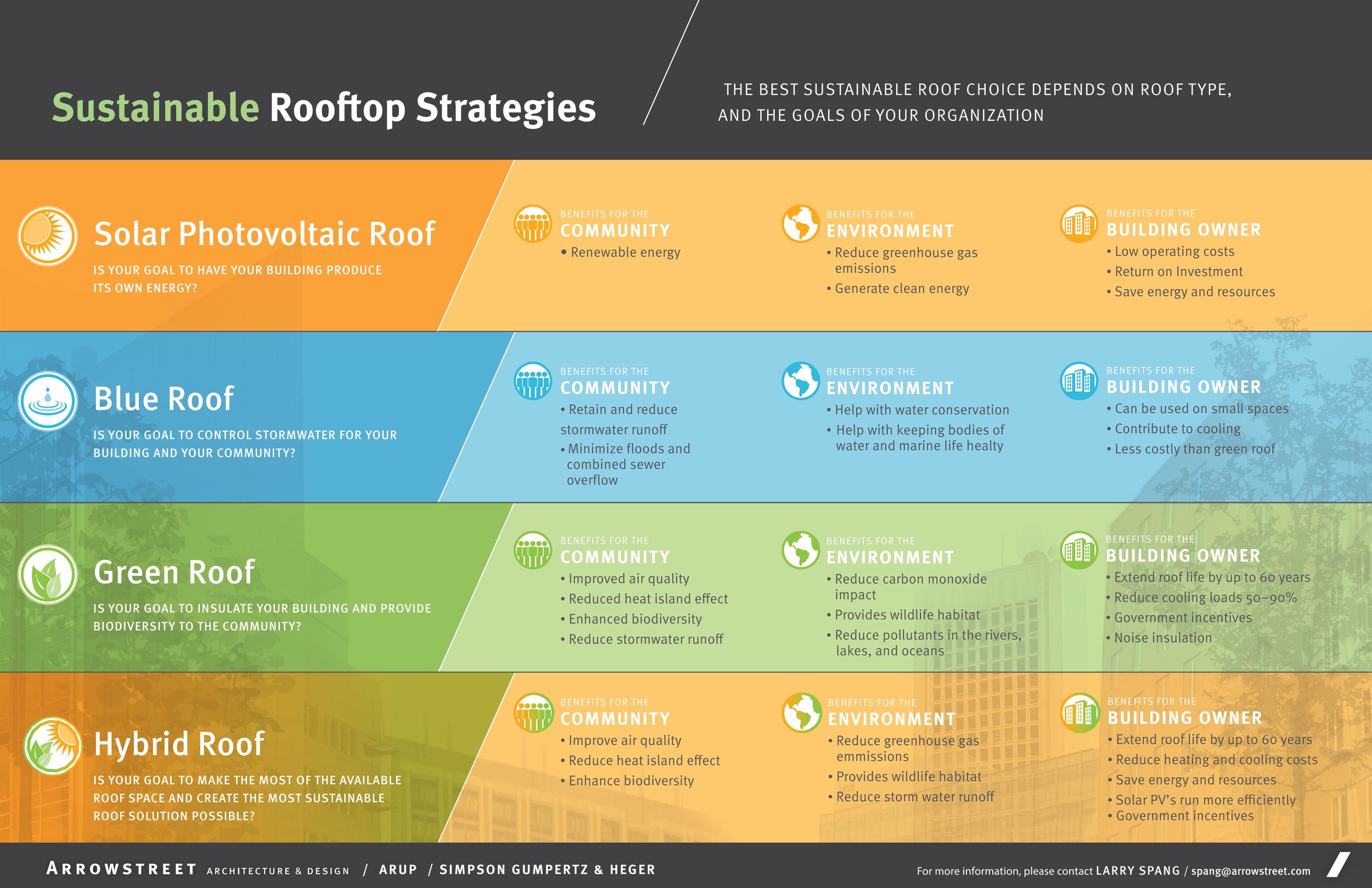
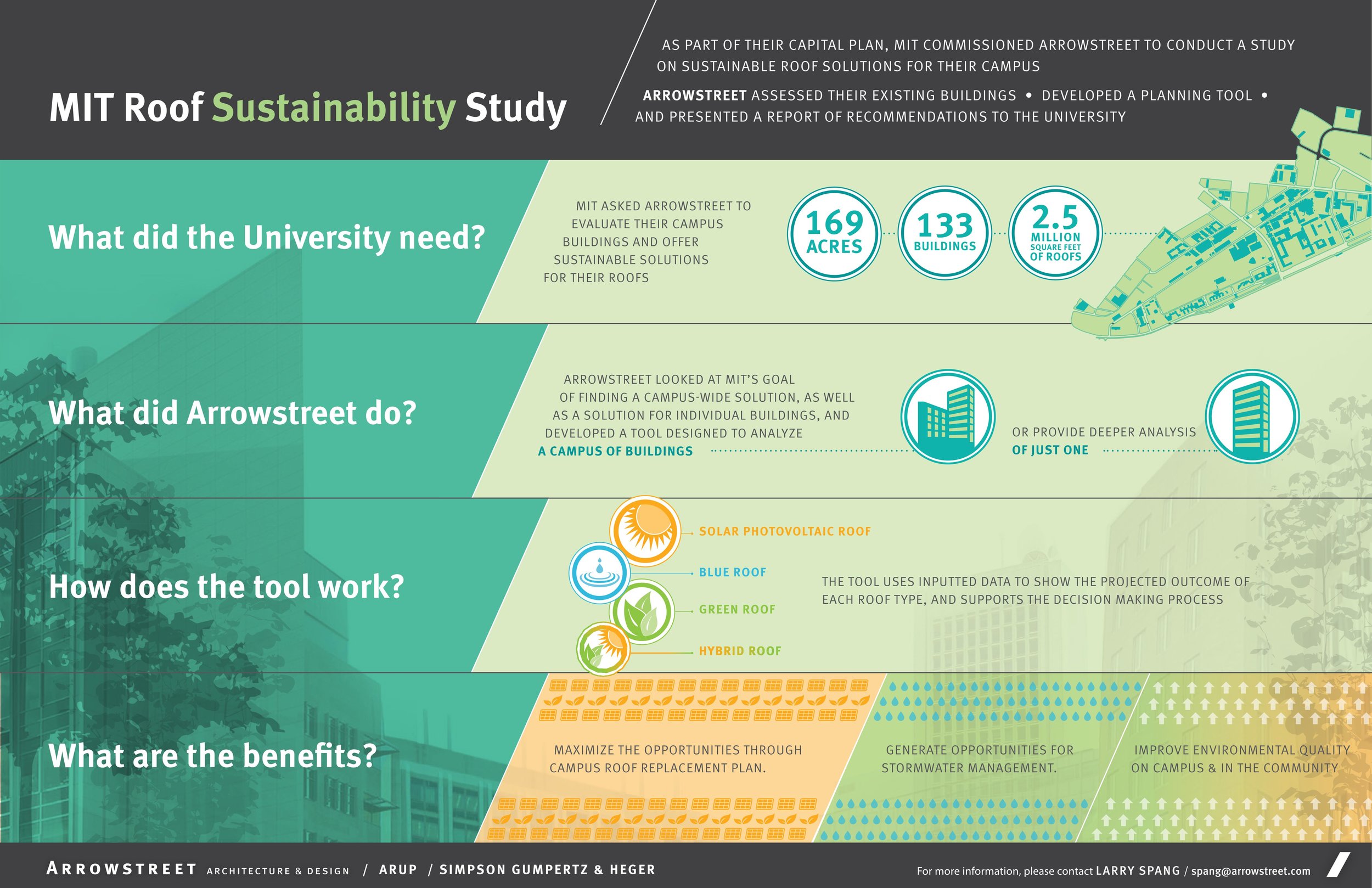
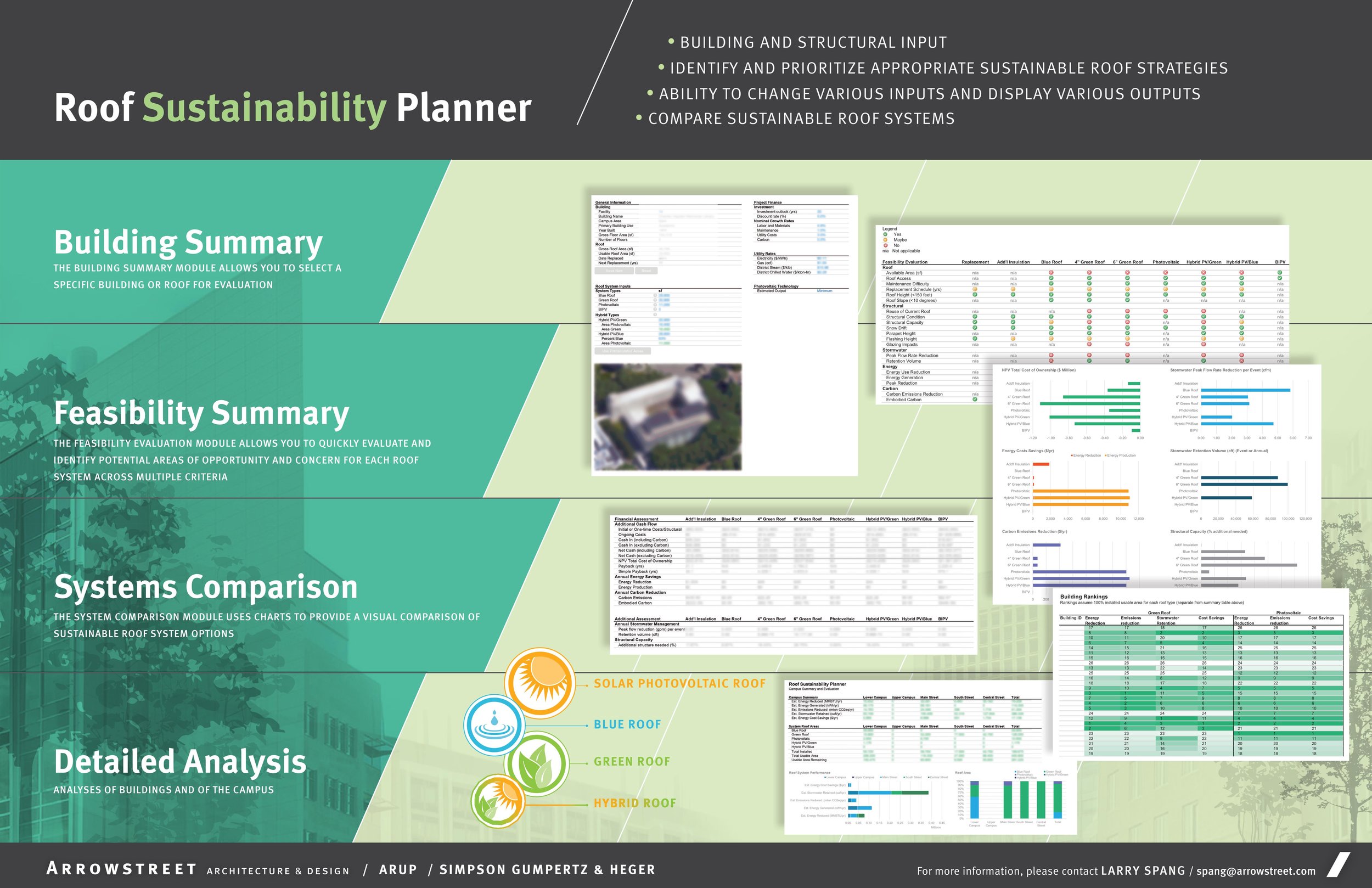
The study and planning tool developed by Arrowstreet allows MIT to develop campus plan strategies and prioritize improvements that lower greenhouse gas emissions, maximize energy savings, improve storm water management, increase biodiversity, reduce the urban heat island effect, increase energy production, and provide more educational/research opportunities.
To develop the tool, Arrowstreet and SG&H completed an existing conditions survey for 20 buildings chosen by MIT, evaluating the roof conditions and building structure. Incorporating the data into a database developed by Arup, the team created an interactive tool to identify opportunities to integrate sustainable roof types such as Increased Thermal Insulation, vegetated (Green) Roofs, Blue Roofs, Solar and Building Integrated Photovoltaics, and Hybrid Roofs into MIT’s roof replacement program.
How Does The Tool Help?
includes a lifecycle cost analysis and gives a snapshot of cost and energy reduction
provides data for potential cost savings for each building (as determined by roof type)
provides MIT with the information to assist in campus planning, capital improvement recommendations and sustainability decisions
The tool is used by teams in MIT Campus Construction, Maintenance and Utilities, Campus Planning and Office of Sustainability and has become part of MIT’s workflow in decision making for their annual roof replacement program.
5 priority issues Identified to set goals for sustainable roofs:
Regulatory Drivers
MIT’s project will seek ways to be consistent with the City of Cambridge, Massachusetts and Federal laws related to climate and sustainability plans and requirements.
Operations and Maintenance
Manage building operations through energy savings, renewable energy production, increased roof life, and reduced maintenance.
MIT and Community Benefits
Visual benefits to occupants and adjacent buildings, usable space, historic preservation, educational benefits and agricultural benefits to support institution’s academic program and research.
Existing Programs
MIT will prioritize and develop a Capital Renewal planning tool using Life-cycle Cost Analysis for their annual maintenance and utilities.
Environment
Reduce carbon emissions, heat island effects, air pollution, manage stormwater and peak flows, and enhance biodiversity resulting in a reduction of greenhouse gas emissions and energy use at the roof level to help protect the health of the Charles River.
Additional Insights
Team: Arrowstreet, Arup, Simpson Gumpertz & Hager, PM+C
Location: Cambridge, MA
Client: MIT
Awards: BSA Honor Award for Planning and Urban Design
Definitions
Greenhouse Gas Emissions: a gas that absorbs and emits radiant energy within the thermal infrared range. The primary greenhouse gases in Earth's atmosphere are water vapor, carbon dioxide, methane, nitrous oxide and ozone.
Urban Heat Island Effect: an urban or metropolitan area that is significantly warmer than its surrounding rural areas due to human activities.
Green Roof: a roof design that replicates meadows to retain water and restore habitats on the top of buildings.
Blue Roof: a roof design that is explicitly intended to store rainwater.
Photovoltaics: the conversion of light into electricity using semiconducting materials that exhibit the photovoltaic effect. A photovoltaic system employs solar panels, each comprising a number of solar cells, which generate electrical power.

